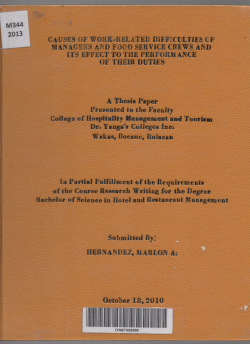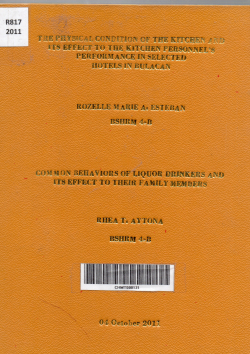VISUAL ACETIC ACID: Its Effectiveness as an Early Detection Test for Cervical Cancer

Type
Thesis
Authors
Category
CHS
[ Browse Items ]
Subject
Visual Acetic Acid
Abstract
Cervical cancer remains one of the leading causes of cancer-related deaths among women. It occurs when abnormal cells on the cervix grow out of control. The cervix is the lower part of the uterus that opens into the vagina. Incidence and mortality related to cervical cancer are both declining in developed countries because of effective screening programs through Papanicolaou (Pap) smear. The Papanicolaous (PAP) smear as cytological methods for screening of cervical cancer has become the core stay of prevention programs as a mass screening system. Potential difficulties in cytology-based program have prompted the investigations of alternative low-cost screening technology such as visual inspection with acetic acid (VIA). With VIA, the doctor swabs the woman's cervix with vinegar. There are indications that would say if it's cancerous or not. The result of VIA is immediately available and does not require lab support. Numerous studies have been conducted on its accuracy and its ability to detect pre-cancerous cervical lesions when | compared with Pap smear. To determine the potential of Visual Acetic Acid test as an effective screening method to detect cervical cancer, three variables have to be measured which consequently indicates that VIA is effective. These include sensitivity, specificity, and predictive value. This randomized clinical trial (RCT) was conducted at Amie's Birthing Home Clinic and Bismillah Al- barakah Lying-in Clinic, a Phil Health accredited clinic in Tabang Guiguinto, Bulacan. This is a clinic that is authorized to conduct Pap smear which is vital in carrying out this study. A known limitation identified is that it only involves all married and sexually active women between 19 and 50 years of age from November to February 2017 who were recruited in the study after taking informed consent. Consistent with randomized trials, the researchers involved thirty (30) women as their subjects who willingly gave their consent to participate in this experiment. The thirty (30) sample was purposively selected to undergo both tests so as to identify if both tests would yield similar specificity, sensitivity, and predictive value. In addition, the researchers used visual illustrations so as to guide them in deciding whether VIA tests positive or negative. Those who tested positive were subjected to biopsy so as to confirm the diagnosis. Findings revealed that VIA has lots of advantages which are easily performed, low cost, results are immediately available. The results show a 96% sensitivity rate and a 92% specificity rate which then translate to the idea that VIA is a reliable tool in early detection of cervical cancer. VIA generally has the potential for greater population coverage than other available screening approaches. The results of the procedure are available immediately, making it possible to provide further management, including referral for further testing or an offer of immediate treatment of the suspected precancerous lesions during the same visit.
Number of Copies
1
| Library | Accession No | Call No | Copy No | Edition | Location | Availability |
|---|---|---|---|---|---|---|
| Main | 606 | T V834 2018 | 1 | Yes |




